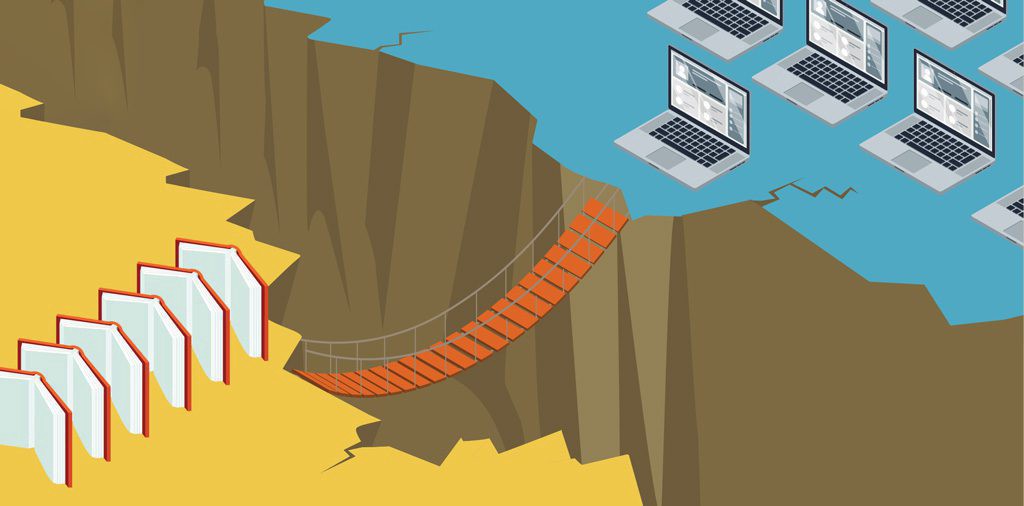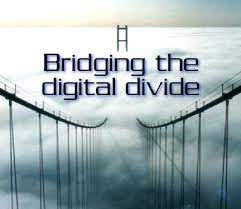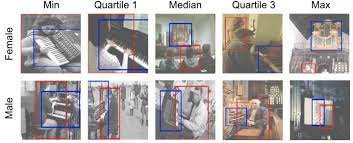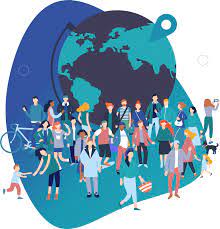

The digital divide refers to the unequal distribution of technology and access to the internet and information technology between different populations or regions. The divide can exist between different countries, urban and rural areas, or different socioeconomic and demographic groups within a country. It can have significant consequences for individuals and communities, leading to differences in education, employment opportunities, and access to information. For example, individuals in rural areas or low-income communities may have limited or no access to high-speed internet, while those in urban areas or higher-income communities may have access to a variety of digital technologies. This can lead to a situation in which some people are unable to fully participate in the digital economy or take advantage of the many benefits of the internet, while others are able to do so. Closing the digital divide requires investments in technology infrastructure and programs to provide access and training to underserved communities, as well as policies that ensure equal access to digital technologies for all people.


Reducing the digital divide refers to the effort to ensure that everyone has equal access to digital technologies and the internet, regardless of their socioeconomic status, geographic location, or other factors that may create barriers to access. One way to reduce digital divide globally is by increasing access to affordable technology. Governments, private companies, and nonprofits can work together to make technology more affordable, particularly in low-income communities. This could include providing free or low-cost devices, internet access, or other digital tools. A way to reduce digital divide locally is by providing digital literacy training: Many people lack the necessary skills to use digital technology effectively. Offering training programs and resources can help people learn how to use technology for things like job searches, online banking, and accessing information. Similarly, encouraging community engagement could help. Digital inclusion initiatives should be community-driven, with input from all stakeholders. This could include partnerships with local organizations or the creation of community technology centers.


Computer bias refers to systematic errors in artificial intelligence (AI) and machine learning algorithms that result in unequal and unfair treatment of certain groups of people. This can occur because the data used to train these algorithms reflects the biases and prejudices of the people who created the data or the society from which the data was collected. For example, if the data used to train a facial recognition system is primarily from one racial or ethnic group,the system may not accurately recognize people from other groups. Computer bias can also be introduced by the algorithms themselves, for example, if the algorithms are designed to make decisions based on historical data that includes discrimination and bias. In these cases, the algorithms may continue to perpetuate existing biases, even if the data used to train them is free from bias.


Crowdsourcing is a process of obtaining services, ideas, or content by enlisting the services of a large number of people, either paid or unpaid, typically via the internet. The term "crowdsourcing" was first coined in 2005, and it has since become a widely used method for businesses, organizations, and governments to tap into the collective intelligence and resources of large groups of people. In crowdsourcing, tasks or problems are often posted online and anyone can contribute solutions or ideas. This allows organizations to access a wide range of knowledge and perspectives and to solve problems more quickly and efficiently than they could by relying on their own internal resources. There are many different types of crowdsourcing. For example, there is open innovation, crowdfunding, microwork, and collaborative problem solving. Crowdsourcing can be used in a variety of fields, including product development, market research, and data analysis, among others.


Computing innovation has had a profound impact on society, shaping the way we live, work, and interact
with each other. Some of the key impacts include:
- Increased Productivity
- Improved Communication
- Access to Information
Computing innovation can often have impacts beyond its intended purposes, often in ways that were
not anticipated by the designers. Some of the impacts include:
- Security threats or misinformation
- Economic Disruptions
- Changes in Human Behavior

CEO & Founder
Phasellus eget enim eu lectus faucibus vestibulum. Suspendisse sodales pellentesque elementum.

Architect
Phasellus eget enim eu lectus faucibus vestibulum. Suspendisse sodales pellentesque elementum.

Architect
Phasellus eget enim eu lectus faucibus vestibulum. Suspendisse sodales pellentesque elementum.

Architect
Phasellus eget enim eu lectus faucibus vestibulum. Suspendisse sodales pellentesque elementum.
Lets get in touch and talk about your next project.
